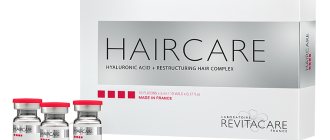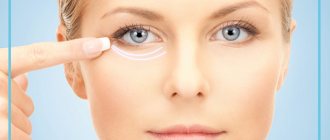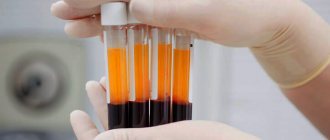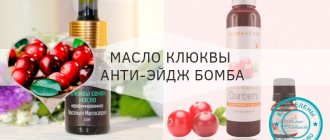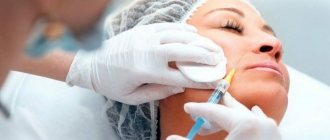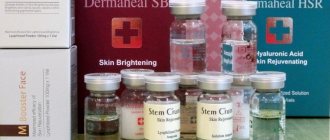From this article you will learn:
- how does vitamin C work on facial skin?
- how to choose the right cosmetics with vitamin C,
- serum and cream with vitamin C for wrinkles – rating 2022.
Everyone knows that vitamin C is an excellent antioxidant and protects the skin from the negative effects of free radicals - harmful byproducts of sun radiation, smoke and other pollutants that lead to premature aging of the skin and the destruction of collagen in it.
However, it became known only recently that vitamin C can affect the level of collagen synthesis in the skin. The first serious research in this direction was carried out only in 2001. The research results were so encouraging that manufacturers of anti-aging cosmetics began to actively develop and bring to market various creams and serums with vitamin C.
As one would expect, the wave of demand for such cosmetics has led to the appearance on the market of too many cosmetic products with vitamin C, most of which turn out to be ineffective when tested. Why this depends, and how to choose a high-quality serum or cream with vitamin C - this article will tell you.
What is vitamin C
Vitamin C is an essential element that performs many functions in the body. Unlike most animals, the human body does not produce this vitamin. It is obtained from food. It is found in citrus fruits, many berries, sweet peppers and leafy greens.
While vitamin C may not be a cure for the common cold, it does offer benefits such as boosting your immune system, helping fight cardiovascular disease, prenatal problems, eye conditions, or even wrinkles.
This is the most common antioxidant. That is, skin cells accumulate this element in order to subsequently protect themselves from damage caused by the environment. These include UV radiation from the sun, pollution and other factors that trigger the formation of free radicals in the body. Free radicals are unstable molecules that take electrons from cells, thereby damaging them. Do you know what else influences their education? Smoking. Therefore, many smokers suffer from dry skin, premature aging and a large number of wrinkles before the age of thirty.
Benefits of Vitamin C for Skin
Vitamin C is especially important for maintaining healthy skin appearance. Skin cells need this element because with its help they fight stress caused by various factors.
It promotes the production of collagen, the protein that makes up most of the outer layer of skin. Many symptoms of vitamin C deficiency are caused by impaired synthesis of this protein.
This element also inhibits the activity of tyrosinase, an enzyme that converts the amino acid tyrosine into melanin. Melanin is the pigment that gives skin color. Most often it is produced under the influence of UV rays. A study was conducted in 2022 that examined the effects of topical vitamin C on sun-induced age spots. Scientists have found that it can potentially help relieve signs of sun damage.
It also replenishes vitamin E. This is another important antioxidant that protects the skin from oxidative damage. Vitamin E levels decrease significantly after sun exposure. But vitamin C is able to replenish these reserves.
How does vitamin C affect facial skin?
Not much research has been done, but the findings suggest that vitamin C:
- can reduce the level of sun damage. If applied to the face, it can reduce the number of age spots as it suppresses the production of melanin, which is responsible for darkening the skin.
- can prevent skin sagging. Declining collagen production with age is one of the causes of aging. We wrote above that it helps synthesize this protein, therefore, it has a beneficial effect on skin tone.
- protects against sun damage. With age, the skin becomes thinner and loses its elasticity. This leads to the formation of wrinkles. Although their appearance is often determined genetically, constant exposure to UV rays destroys collagen and elastin, which leads to premature aging of the skin.
- Helps speed up wound healing and reduce scarring.
Forms and uses of vitamin C in cosmetics
Some manufacturers add this element to the finished product, and some create a vitamin powder that can be added to any cosmetics. It's important to know that not all forms of vitamin C are suitable for the skin. It is divided into stable and unstable.
For the element to be effective, it must be in the form of powder or ascorbic acid. In the composition of the product it can be recognized by the name Ascorbic acid. However, this acid is unstable and is easily destroyed by heat, oxygen or light. The downside is that it can cause irritation as it is often used at a low pH.
The benefits include the fact that it stimulates collagen synthesis, increases skin elasticity and firmness, reduces pigmentation and post-acne, and evens out facial skin tone.
In cosmetics, the vitamin is used in the form of L-ascorbic acid, scorbyl-6-palmitate and magnesium ascorbyl phosphate. The first is considered the most stable. It is water soluble and at the same time as effective as regular ascorbic acid.
The quality and effectiveness of the product largely depends on the form of vitamin C used. Scientists believe that the best results can be achieved if the following factors coincide:
- L-ascorbic acid is used
- Its concentration ranges from 10 to 20%
- pH value does not exceed 3.5
But cosmetics alone will not rid you of problem skin. Come to the “Flourish” marathon to learn not only about the best massage techniques, but also about how nutrition affects the condition of the skin. Read more on the marathon page.
Important: The maximum amount of vitamin C taken orally should not exceed 2000 mg per day for adults.
Ascorbic acid for the face and nasolabial folds under a mesoscooter at home
It is possible to carry out the mesotherapy procedure independently. There are mesoscooters on sale with different characteristics. A roller with sharp titanium needles is rolled over the surface, slightly piercing it. A pre-applied solution of ascorbic acid from an ampoule gets into the punctures, reaches the subcutaneous layers and starts renewal processes.
The roller is applied to problem areas on the face: nasolabial folds, unclear contours, and in the area of wrinkles. Exposure time: 10 minutes with light pressure. The procedure causes a burning sensation, but there should not be severe pain. The redness goes away the next day, the result is visible immediately.
How to use vitamin C for your face
The method of application depends on what form of vitamin C you are going to apply to your face.
If it is a powder, make sure it is for topical use and not for consumption. Otherwise it will not be effective at all.
How you can nourish your facial skin with vitamin C:
- if it is a powder, take a small amount. There will probably be information on the packaging about how much is recommended to use.
- Mix the powder with serum or lotion in your palm. Can be mixed with squalane.
- it is necessary that vitamin C constitute at least 8% of the product received, but not more than 20%, otherwise it will cause skin irritation.
- Apply the resulting solution to your face or body.
Be sure to do an allergy test: 24 hours before the procedure, apply a small amount of powder to the skin.
Where do we get vitamin E from?
Sources of vitamin E, the vitamin of youth, are: vegetable oils (sunflower, cottonseed, corn), apple seeds, nuts (peanuts, almonds), leafy green vegetables, cereals, legumes, oatmeal, soy. Vitamin E is found in milk, animal and poultry liver, and egg yolk.
According to scientists, only a third of vitamin E taken with food is absorbed by the body. Vitamin E is so indispensable for facial skin that it is often added to cosmetic products.
How to use vitamin E for facial skin? You can replenish its deficiency for the skin with the help of dietary supplements. Ideally, these dietary supplements should contain other vitamins and microelements necessary for youthful skin and act in a complex manner, achieving maximum effect.
Vitamin E is included in Oxylic
In addition to vitamin E, Oxylic also contains other vitamins and microelements, which are selected in such a way that they are mutually reinforcing:
- + vitamin C supports vitamin E in a metabolically active form;
- + vitamin C, as well as selenium with vitamin E make up an active composition, enhancing each other’s biological effects.
Vitamin E included in Oxylic:
- + Protects cell membranes from damage;
- + Activates collagen synthesis;
- + Combined with vitamin C, helps protect skin from UV rays.
1 capsule contains 5 antioxidants
Selenium
50 mcg
Vitamin E
36 mg
Vitamin C
300 mg
Lycopene
2 mg
Beta-carotene
2 mg
Ampoules for face
Encapsulated forms are created in order to solve the problem of instability of forms and their oxidation. These formulas often contain pure ascorbic acid, which definitely should not be used on sensitive or irritated skin.
This approach works much faster than creams. It is recommended to be used as additional care for severe pigmentation, dull skin or post-acne. After use, smooth and elastic skin and a reduction in wrinkles are expected.
What should the product be in the ampoule:
- the concentration of the vitamin is no more than 10%, in this case the complexion is evened out, the product fights free radicals and slows down skin aging
- contains bio-peptides that stimulate collagen production
- high molecular weight hyaluronic acid is present, which is necessary to maintain the skin barrier function
- pH value is 2.8
Ascorbic acid powder
You can buy ascorbic acid powder at the pharmacy. It is sold in small bags of 10 grams. It can be used in different ways: prepare masks, add to ready-made masks, enrich creams.
We do not recommend adding it to the cream, since vitamin C can destabilize the formula of the cosmetic product, so the result is unpredictable. In addition, vitamin C quickly loses its properties in air, so there is no benefit from it during long-term storage.
And again clay
Make a clay mask, let it cool a little, and then generously sprinkle ascorbic acid powder into the composition. Mix quickly and apply to skin. If you have dry skin, you can add rose or lavender hydrosol instead of water.
With green tea
All girls living in big cities should adopt this mask. Green tea and ascorbic acid are a powerful antioxidant tandem. The combination of these two products will provide your skin with a wonderful detox, quickly transform your complexion and give you a healthy glow. Keep the recipe:
- brew strong green tea;
- add a tablespoon of ascorbic acid powder to it;
- Stir quickly and apply to face with a cotton pad.
Photo by Anna Shvets: Pexels
Leave for 10 minutes and wash. If after the first time there were no unpleasant sensations, next time you can apply the solution in several layers. By the way, immediately pour out the remaining solution - there is no point in storing it, vitamin C in this form loses its properties in just a few minutes.
Concentrates
This is practically the same as solutions in ampoules. They differ in the amount of active substances in the composition. They also cannot be kept in air for a long time; they oxidize quickly, but they also act relatively quickly.
Concentrates should be applied carefully, because a large number of active components can lead to severe allergic reactions.
The application of concentrates should be combined with self-massage so that the active components are better absorbed into the skin. We recommend using techniques from special intensive courses.
Moreover, it is recommended to apply concentrates in combination with creams, as they penetrate into the deep layers of the skin and can even harm it.
Fruit masks
The easiest way to get ascorbic acid without leaving home is to use a couple of fruits. Such masks perfectly cleanse the skin; they can be used instead of fruit peeling. Since fruits contain other acids in addition to ascorbic acid, it is better not to go out into the sun without protection after such a mask.
Vitamin bomb for face
Mix half a kiwi, half an orange and 2-3 strawberries in a blender and half a teaspoon of honey. Apply the resulting puree to your cleansed face. After 15 minutes, rinse with water. Since fruit puree tends to slide off the skin and get into the eye, it is better to do the mask while lying down. If you have blanks for fabric masks (those tablets with a base that turn into a mask according to the shape of your face in water), use them immediately. With them, the puree will work more efficiently, and the fabric base will not allow it to escape.
Milk with lemon
This recipe is for normal to dry skin. Take milk at room temperature, add a spoonful of lemon juice and cosmetic clay to it to get a creamy consistency. Apply to the skin, rest with the mask on your face for 15 minutes.
If you have very dry skin, you can use sour cream or homemade heavy cream instead of milk. If you have combination skin, apply a mixture of natural yogurt without additives with lemon juice to oily areas.
Photo by cottonbro: Pexels
Hydrogel patches with vitamin C
Patches have become much more popular in recent years. The components of the patches instantly penetrate the skin around the eyes. They are often used against puffiness and blueness under the eyes.
Also used to get rid of wrinkles that sometimes appear from lack of moisture. In such cases, two types of patches can help: with hyaluronic acid or with gold. The former contain antioxidants, peptides and plant extracts. They cope well with pigmentation and wrinkles. And the second ones can be kept for up to 50 minutes. They contain metal ions, vitamins and glycerin.
There are several types of patches:
- Hydrogel. They contain more than 90% water and hyaluronic acid. They fit tightly to the eyelid, and the active components penetrate deep into the cells.
- Fabric. This is a fabric that contains a high concentration of vitamins and oils. Unlike hydrogel patches, they do not fit tightly to the skin, which makes the effect much worse.
- Collagen. This type helps to perform several functions at once: moisturize, remove swelling and wrinkles.
Patches cannot be used for conjunctivitis, cuts, abrasions and rosacea.
Contraindications
It is not advisable to use products with acid in the following cases:
- if there is damage: abrasions, cuts, inflammation, etc.;
- individual sensitivity to the drug. The skin may burn or become hot, in such cases they try to reduce the concentration or refuse to use it;
- spider veins on the face, injured, dilated vessels;
- tendency to form blood clots;
- diabetes mellitus of any type;
- The skin near the eyes must be protected from the strong effects of acid.
In all these cases, a doctor's consultation is required before use for complete safety.
Important: the combination of ascorbic acid with glucose, so beloved by all kids, is completely unsuitable for use on the surface of the skin. This mixture causes rashes, allergies and irritation.
Acid should not be stored in the refrigerator. Opened ampoules cannot be stored for long periods of time; they must be used without delay. Upon contact with metal, the vitamin is instantly destroyed.
